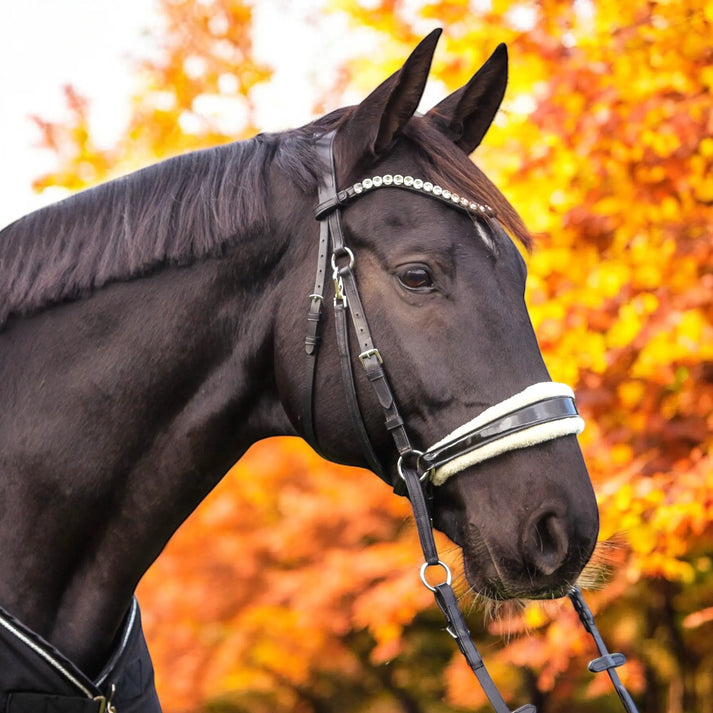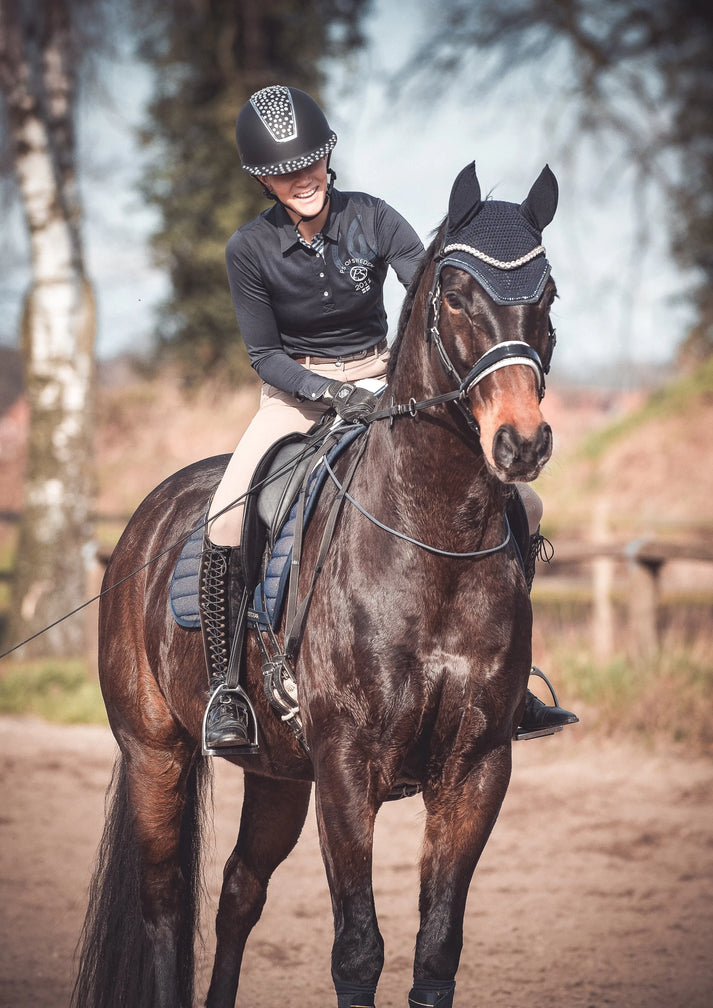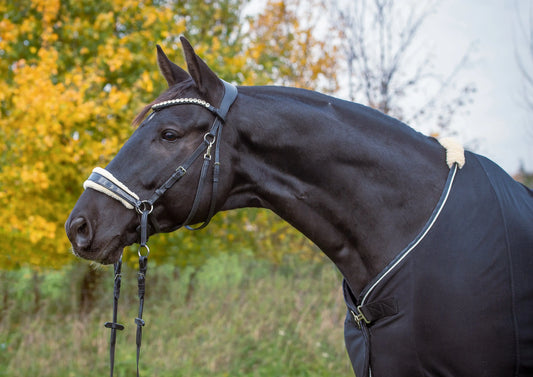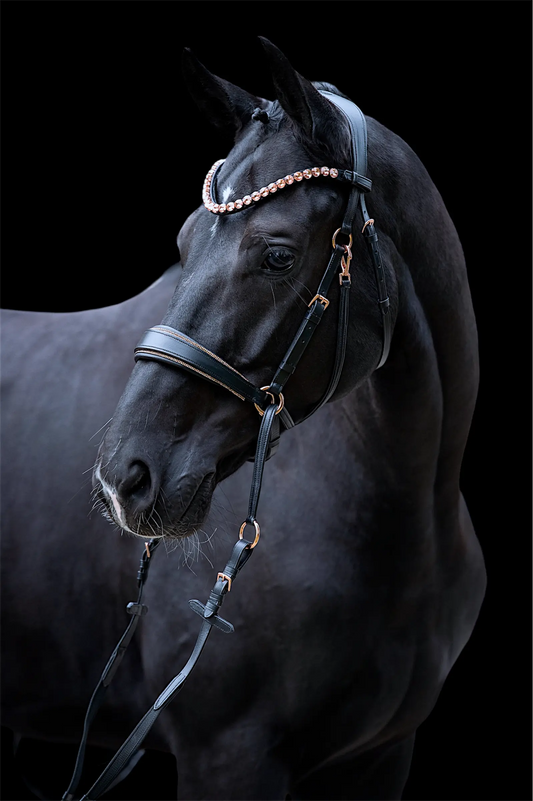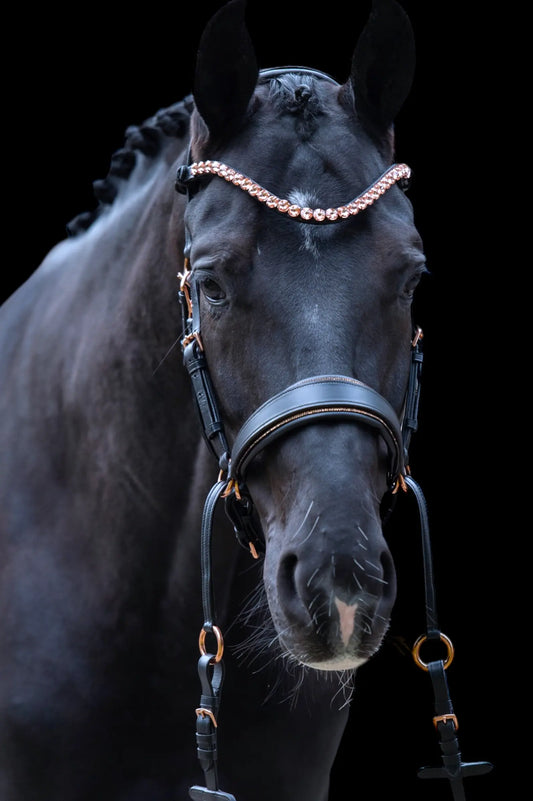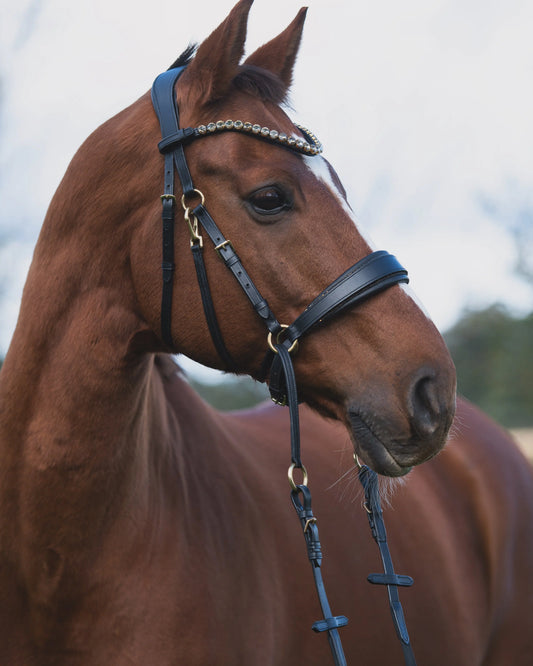A gentle alternative for horse and rider
Share
A gentle alternative for horse and rider
Why bitless riding? A gentle alternative for horse and rider
In today's horse world, bitless riding is becoming increasingly popular. But why are more and more riders choosing this gentle alternative? The answer lies in the combination of freedom, relaxation, and a harmonious relationship between rider and horse. A well-trained horse ridden without a bit often exhibits a natural ease and a relaxed mouth—and this is precisely the key.
1. Freedom for the horse – The mouth in motion
A horse ridden bitless has the ability to move its mouth freely, swallow, and lick. This freedom is essential for relaxation, as a blocked mouth often leads to tension and resistance throughout the horse's body. By riding bitless, we can give the horse the freedom to relax its jaw, which has a positive effect on its overall movement. A loose mouth is an indicator of a relaxed and relaxed horse.
2. Relaxation – The key to harmony
Relaxation is one of the central goals in the training of a dressage horse. It describes the state in which a horse is both mentally and physically relaxed and in tune with the rider. A horse that resists the bit or constantly holds tension in its mouth will have difficulty achieving this state of relaxation. Riding without a bit allows for a softer communication that strengthens trust and harmony between rider and horse.
3. Balance and permeability – the basis for fine aids
A bitless horse that has been trained in balance and suppleness responds to the most subtle aids. Without the constant influence of a bit, the horse can move more freely and learns to respond to weight aids, the seat, and gentle rein aids. However, this type of communication requires a conscious and subtle riding style that encourages the rider to refine their own aids.
4. Promote physical health
Bitless riding offers not only mental benefits, but also physical ones. Many horses develop injuries in the mouth, jaw, or even the nerve cords in the head due to improperly used bits. By switching to a bitless bridle, we avoid potential sources of injury and promote the horse's health and well-being. An anatomically correctly fitted bitless bridle supports the horse's natural headroom and mobility.
Conclusion: A gentle choice for horse and rider
Bitless riding is more than just a fad—it's a conscious decision for a gentler, more harmonious style of riding. It demands mindfulness and refined aid application from us as riders, but rewards us with a more relaxed, content horse that is willing to work in harmony with us. By doing without the bit, we give the horse the freedom to develop its full potential—relaxed, balanced, and ready for the most subtle aids.
However, this conscious decision requires proper preparation and the right choice of bridle. It's worth paying attention to quality and anatomical fit to best promote the horse's physical health and well-being.

